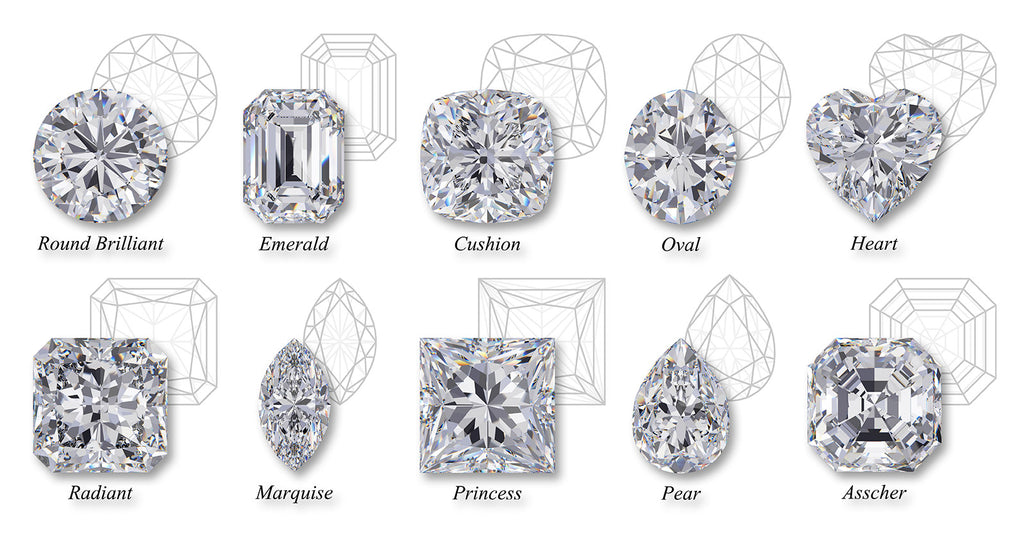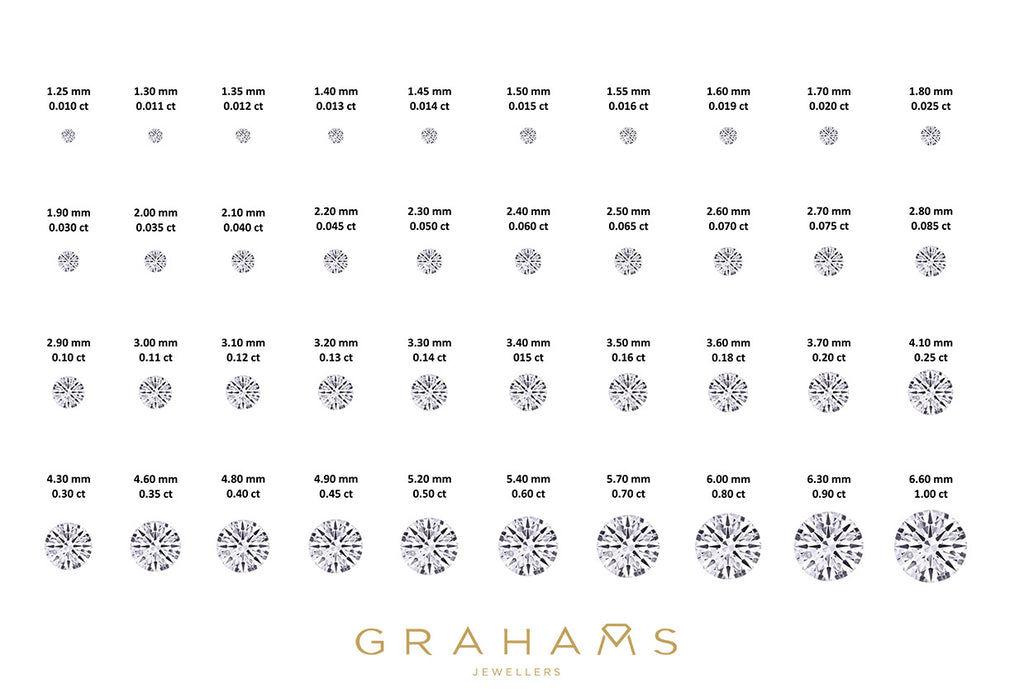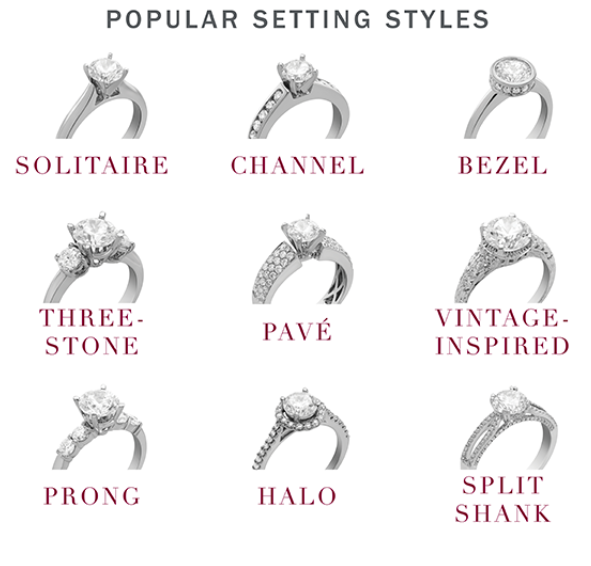Choosing your perfect engagement ring is an exciting process but there are a lot of things to consider - use this engagement ring guide to find out all you need to know.
An engagement ring signifies couples taking the next big step in their relationship in wanting to spend the rest of their lives together. While it isn't necessarily known when the art of proposing marriage with a ring began, some historians have traced the tradition back to Ancient Rome where Roman women were known to sport simple iron bands to represent mutual obedience and love. Gold variations of these rings were even found in the ancient ruins of Pompeii.
While they remain the most popular choice today, diamond engagement rings wouldn't be seen until around the 15th Century when the Archduke Maxamillion of Austria proposed to his love, Mary of Burgundy. His reasoning for choosing a diamond ring? He wanted to propose something different from what everyone else had. Despite this, diamond engagement rings would still not gain momentum for some 400 years when a well-known British jewellery company ran a promotion with the slogan diamonds are forever. Causing quite the sensation right across Europe and the United Kingdom, this marketing campaign became a viral moment before viral moments were even a thing. Ever since then diamond engagement rings have become the most lust-worthy item when people find that special someone.
In many western cultures, engagement rings are traditionally worn on the left hand. The fourth finger as the designated ring finger is a tradition that emerged from the belief that this finger has a vein that runs directly to the heart. This isn't the same for all cultures, however. In India for example, engagement rings are worn on the right hand as the left is considered unclean. This is also customary in Northern and Eastern European countries such as Denmark, Norway, Poland, Bulgaria and Russia. It is also a tradition in Greece, Spain and Portugal.
Engagement Ring Guide Overview:
How To Choose An Engagement Ring
Choosing an engagement ring can be tough, it is something you or your partner are potentially going to wear forever after all. So, you want to ensure that you make the right decision.
Five elements go into picking the perfect engagement ring, they include style, stone, cut, carat and setting.
Style
Before considering the stone and the 4Cs (cut, carat, colour and clarity) of the engagement ring, you're going to need to consider what style you or your partner may like. If you're picking the design without the guidance of your partner, you should think about their style and the kind of jewellery they tend to wear. Perhaps your partner is a vintage fan and would gravitate towards a more retro or art deco design, a traditionalist that cant go past the classic solitaire, a minimalist who likes simple jewellery or a glamazon that enjoys glitzy jewellery with a detailed stone setting. Learn more about the 4Cs in our Diamond Guide.

Stone
Once you have selected the style of ring, you should then consider what kind of stone you or your partner may like. Choosing the right stone is a crucial part of picking an engagement ring as its what's ultimately going centre stage, so you want to ensure you or your partner is going to like it over time. There is an overwhelming amount of stone selections out there, the best way to pick one is to narrow down your choices. Diamonds remain the most common choice given that they are the most traditional, durable and not to mention, signify eternal love. But there are plenty of other gemstones that have gained popularity for engagement rings in recent years. When picking out a stone, considering things like your or your partners favourite colour, birthstone, the symbolism behind certain stones and eye colour are a great way to narrow down your choices.

Cut
A diamond cut refers to the style or design guide used when shaping a diamond for polishing rather than its actual shape. There are a myriad of different diamond cuts out there. Some of the most common include the princess cut, emerald cut, cushion cut, pear, oval, marquis and round cut. The cut is usually down to the wearers preference. Most people usually only consider the shape and appearance of the stone rather than its ability to shine. So whether you're drawn to the ever-classic princess cut or the more conventional heart cut, the geometric characteristics of the stone are what is ultimately going to enhance the appearance of the ring itself.

Carat
Carat is used to measure the size of the stone. A unit that is equal to around 200 mg, was originally a method used to calculate the seeds of a carob tree in the early 15th century. The carat can affect the price of a diamond tremendously, however, several other factors will also determine this. One carat is divided into 100 points, stones with less than one carat are often pointers. Choosing the number of carats your ring may have is ultimately down to what's in your budget.
| CARAT WEIGHT | POINTS |
| 1 carat | 100 |
| 3/4 carat | 75 |
| 1/2 carat | 50 |
| 1/4 carat | 25 |

Setting
The final step in choosing your engagement ring is picking a setting that reflects you or your partners style. The setting is what holds your stone into place and allows you to show it off. There are several engagement ring settings out there, some more common than others. Traditional diamond jewellery settings include the prong or the claw which primarily holds solitaire diamonds in place, the Channel, Bezel, Pave, Invisible, Bar and Chevron. When picking out the setting you want your diamond ring to have, consider you or your partners style as well as the settings on rings already in their collection.

For more information on buying diamond rings, check out our how to buy a diamond ring without getting duped tips.
Popular Engagement Ring Styles
When it comes to picking out engagement rings, there is a whole bevvy of styles to choose from. Whether you have your eye on a classic, contemporary or simply unique ring to pop the question with, these are just a few styles that are proving to be popular with engagement couples.
Solitaire Style
Simple yet elegant, the solitaire style is one of the most classic engagement rings. Signifying that love is pure and endless, it is a style that has been popular among engaged couples for many years. The ring style had its moment late in the 15th century when Archduke Maxamillian proposed Mary of Burgundy. It was one of the first times someone had proposed with a diamond ring of this kind. Combining elegance and refinement with its simplistic claw setting and single stone, the solitaire engagement ring is a popular choice among traditional brides-to-be as well as those with a more minimalist style. With nothing getting in its way, the solitaire engagement ring allows you to effortlessly show off your diamonds sparkle.
Halo Style
A favourite among those who like all things bright and sparkly, the halo style typically boasts a round, princess or cushion cut in the centre as well as tiny stones on the outside and the band. The middle stone is also slightly raised, allowing it to be the centre of attention. The origins of the halo ring date back to the Georgian period where it was popular among Europeans. It then saw a resurgence within the Victorian era where it was popular to have a coloured stone in the centre. The halo remains one of the most popular styles today, particularly when it features smaller diamonds surrounding the larger one.
Pear Style
A style that has gained traction in recent years, some would say that the pear style is an extension of the teardrop-shaped diamond engagement ring. Often featuring a singular pear cut diamond in the centre and surrounded by smaller diamonds, the pear style is somewhat of a statement ring. Its design is quite modern, often fooling people into thinking it's a more recent style when it has been around since the late 15th century when a Flemish (Belgian) man known as Lodewyk van Bercken invented a diamond polishing wheel and produced the eye-catching shape. Given how unique pear-shaped stones are you need a setting that allows the diamond to be centre stage, hence why simplistic designs such as the 6-prong setting or the halo setting are so popular.
Emerald Style
A style that has been worn by the likes of Beyonce, Victoria Beckham and most famously Elizabeth Taylor. This style of ring is not always emerald colour, but rather, its shape resembles that of an emerald. Lauded for its ability to shine and sparkle, the emerald-cut diamond is one of the oldest on the market with a history that dates back to the 1500s. Stonecutters initially began creating this shape for emerald stones. It remains popular today as the reduced pressure used during the cutting process means that chips remain less common. The two most popular settings for emerald cut rings are 3-set, which features a simple band that is usually gold, silver or white gold and two smaller stones on either side of the main stone.
The other prominent setting for emerald cut rings is pave, which is a band with tiny diamonds fitted into it.
Stuck on what bright sparkler you'll pop the question with? Buying a diamond isn't easy. Head to one of Grahams' five in-store locations where one of our well-informed sales associates will guide you through the process of selecting the perfect engagement ring. You can also browse Grahams' extensive engagement ring section online along with other high-quality jewellery such as wedding rings, wedding bands, earrings, necklaces, pendants and bracelets.



